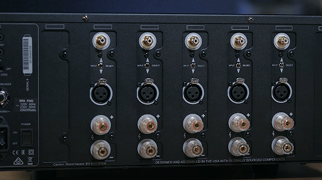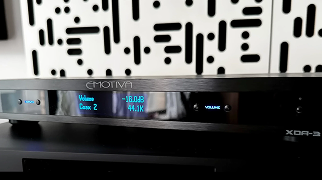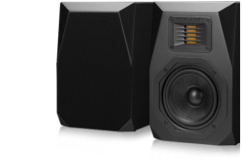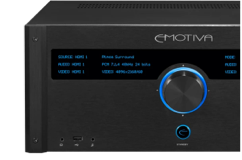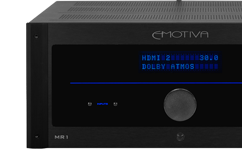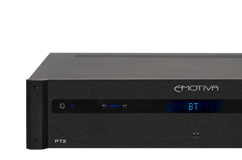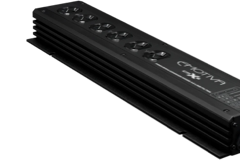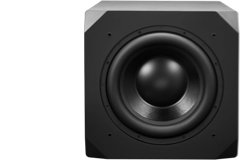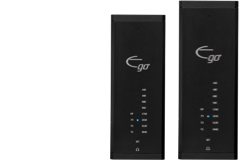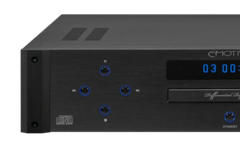
Most subwoofers for home theater are powered units, meaning they have their own built-in amplifier. Most home theater AVRs have a subwoofer pre-out and not a separate amplifier channel for a subwoofer. When choosing a subwoofer or subwoofers that will best compliment your home theater system in your space, there are many factors to consider. This guide will discuss many of those considerations and help you understand what you may be looking for in a subwoofer.
Subwoofer Sound Quality
The sound quality of a subwoofer can be determined in several ways. The subwoofer often handles the low-frequency effects (LFE) channel used in movie production, along with bass crossed over from other surround channels. This will be the impact of a kick drum or the rumble of an explosion. The quality of this sound reproduction is often measured in how flat the frequency response is down to its lowest possible point. Many modern subwoofers can reproduce frequencies as low as 20-30Hz. Equal reproduction of different frequencies is essential but not necessarily a determining factor in how a subwoofer will sound. One defining characteristic of subwoofers is how quickly they can respond and recover to an impulse for accurate replication of recorded sounds.
Subwoofer Size & Dimensions
You might have convinced yourself that size doesn't matter, but it does in the world of subwoofers! You can't hide behind your F-350 with this one! The size of your driver and cabinet enclosure will largely determine the depth and volume of your bass. Moving lower bass signals requires an enormous amount of energy; the more extensive the driver, the more power it will handle and the higher volume of air it will be able to move. Larger woofers will have larger cabinet volumes to provide the proper amount of “air-cushion” that the driver needs for optimal performance.
The typical tradeoff in loudspeaker design involving subwoofers is the driver’s area compared to the weight of the speaker cone itself. A larger speaker area will move more air and create higher SPL if all other factors are identical. The weight of a driver and voice coil will affect how quickly a subwoofer can respond to sudden changes in the input signal level.
Because of this, an 8” subwoofer may respond faster than a 15” subwoofer, but the 15” driver has nearly 4 times the active surface area and will move 4 times as much air. Although less common in home theater subwoofers, many subs will have multiple smaller drivers instead of a single large driver. The smaller drivers will respond faster than the large driver but with larger effective combined surface areas.

Power Handling
Most subwoofers you will find are active with an integrated amplifier. This means that the subwoofer can drive itself with a signal input rather than relying on an external amp. You can sometimes find passive subwoofers, but these are not widely used. Subwoofer drivers require a high amount of current to perform best, and low frequencies also require a lot of power to reproduce. In the case of a passive sub, a very powerful external amplifier will be needed.
Bass
Bass frequencies are the lowest sounds that we hear. They are often heard or felt as rumbling or impulses like an explosion. Good quality bass should be precise and defined, sounding like it is an extension of your main speakers and not its own separate sound source. People often use multiple subwoofers to help with the delocalization of bass frequencies and fill the listening space.
Sealed vs. Ported Subwoofers
Subwoofer drivers will behave differently in an enclosure based on several factors. The mechanical compliance of the woofer itself, the cabinet's dimensions, and the cabinet's tuning will all impact the overall sound of the subwoofer.
Completely sealed cabinets will not have any rear-wave radiation from the woofer, instead using the combined volume of air like an assistive spring to help return the driver to its resting position after excursion or compression. This helps sealed subwoofers to maintain a tight and even response down to the lowest frequency capabilities of the driver. Our Airmotiv SE8 Subwoofer and Airmotiv SE12 Subwoofer are great examples of high-performance sealed cabinet subs.
Ported subwoofers, however, utilize the tuned dimensions of the cabinet to assist subwoofers in reproducing lower frequencies and will allow higher SPL levels compared to a sealed sub because of the additional utilization of the rear-wave radiation from the driver. The size and shape of the ported design and cabinet dimensions will affect the subwoofer's frequency response. The Airmotiv RS11 and RS13 are our top performers when it comes to a ported sub design.

Where to Place Your Subwoofer
Subwoofers are typically placed at the front of a room, between the center speaker and one of the front speakers. Multiple subs can be placed in other points around the room, but it is typically not advised to put subwoofers in the corners. This can cause abnormal bass buildup and accentuate room modes. Some home theaters even have “bass-exciters” attached to a couch or the seats so that the listener feels the shaking bass. Check out our video on how to get amazing bass from your room here: How To Get The Most Bass Out Of Your Room!
Wireless vs. Wired
Most subs will need to be connected to both a wall outlet and your pre-amplifier. In an average setup, this is accomplished by connecting your sub (using an interconnect cable) to your preamp and, of course, a power cable to the wall. But wouldn't it be cool if you could eliminate the need to connect your sub to your preamp? That would mean a lot fewer cables!
Luckily we offer our VSUB Wireless System so you can place your subwoofer anywhere in your room without needing to be tethered to your preamp or processor!
What to Purchase With Your Subwoofer
If you are adding a subwoofer to your stereo or home theater setup, you need to consider how it will be connected to your preamp or AVR. Many preamps and most AVRs have a dedicated subwoofer output terminal that will connect to your sub via a single RCA or XLR cable. It is still possible to add a subwoofer to a stereo system with no sub output. Many subwoofers have high-power inputs that can connect with speaker wire or paired RCA inputs and outputs. The subwoofer can be placed between a preamplifier and the power amplifier.
Find Your Sound With Emotiva
Subwoofers are great additions to any home theater setup! Whether you want more bass to add to your stereo listening or if you want to hear more of the effects in movies, any of our subwoofers will be a great choice! Check out our amazing performance and high value with our Airmotiv Subwoofers.
Share Post



